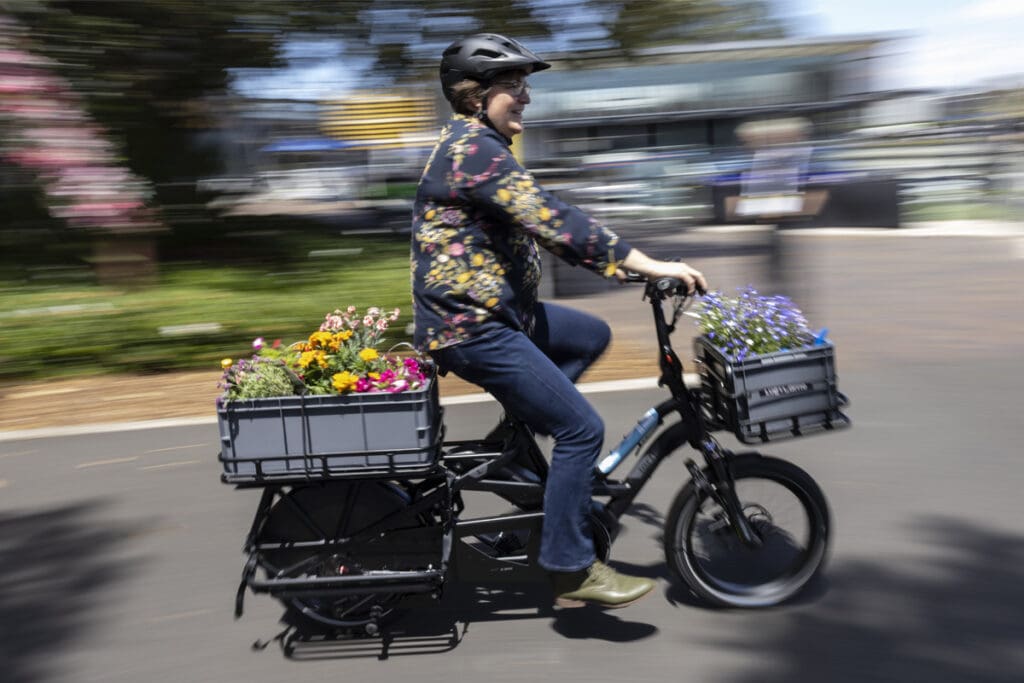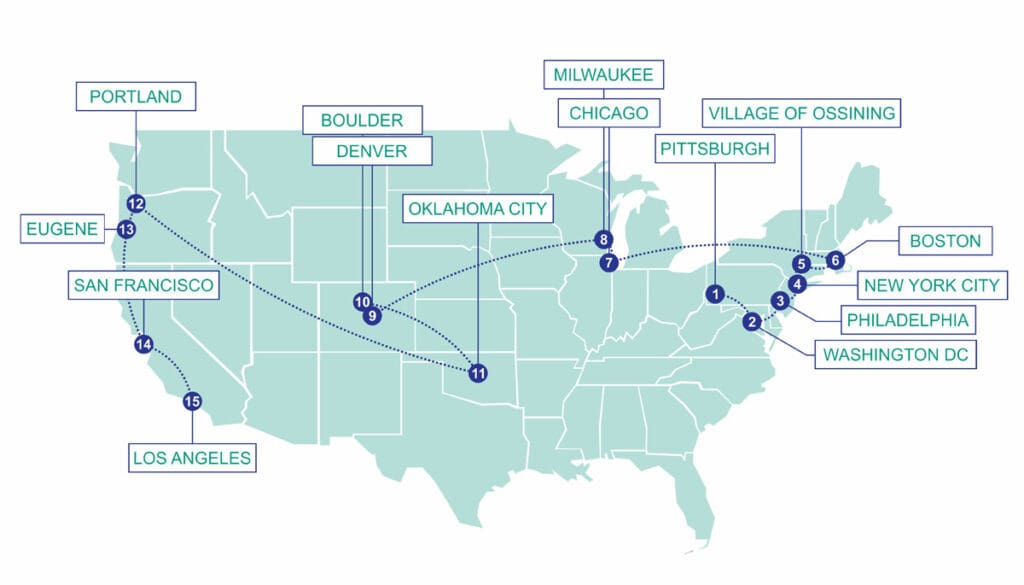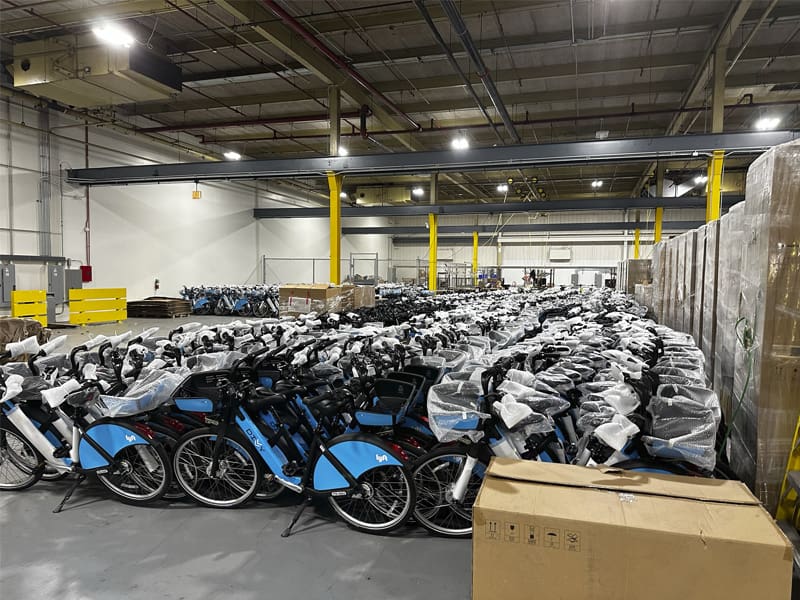Transport Necessities to Drive Micromobility in Regional Australia

Cairns, Queensland
Efforts to entrench micromobility in Australia’s regional centres should focus on residents and groups struggling to find viable transport options, especially for the implementation of share services, according to a Far North Queensland planner recently returned from a study tour of the US.
Town planner and community development consultant Nikki Huddy, who completed a nine-week Churchill Fellowship tour of several US States, said while young professionals dominate share service use in Australian major cities, it is people at the other end of the socio-economic spectrum that are likely to drive successful services in regional cities and towns.
The 2022 Churchill Fellow said her tour of successful micromobility programs in the US confirmed her belief that residents without the financial means to own, register and maintain private cars – and often without easy access to reliable public transport – are likely to be the core audience for share services in regional Australia.
“The biggest benefit of micromobility is putting public transport where it isn’t and where it’s needed most,” she said last week.
“The opportunity to provide people with an alternative form of transport that is shared or subsidised is the essence of getting these services established in regional Australia.”
Nikki said data from Queensland’s Department of Transport and Main Roads provides a lot of insight to fines people get for driving unregistered and unroadworthy cars, and without a licence – “the kind of driving people do when they’re low-income and don’t have an alternative to driving”.
“These people are vulnerable to petrol price fluctuations and their old car breaking down,” she explained.
“Now I have a clear understanding of how those ingredients of micromobility can go into a public transport system that will work for regional and remote Australia.
“We’ve never been able to have good public transport in smaller centres in Queensland, even for a place like Cairns, because we’ve never had that volume or throughput that public transport has always needed to work.

“But micromobility elements, from a shared electric car through to a share scooter, are now the ingredients of a public transport system that doesn’t really on that volume.
“We should then be able to tap into State Government subsidies for public transport, because we’ve got something that fits our purpose.”
Local Government the Backbone of Micromobility
Nikki says her tour also emphasised that local government is the most important government tier for the successful implementation of micromobility.
“There is a need for governments and communities to understand what ‘the public good’ looks like – and who it is for – and to find balance between maintaining the public good without stifling innovation.”
“The lesson from the earliest shared mobility start-ups, such as Trek’s B-Cycle in Denver in 2008 and Citi-Bike in New York in 2013, through to the varying success of e-scooter roll out since 2018, is that the support of local government is essential,” she said.
“One of the challenges is that transport has often been delivered by the state government, yet shared mobility is delivered at the local government level, as they are the managers of the footpaths and road network, and administrators of activities on roads.
“As such, local governments and shared mobility operators need to have a good working relationship and understand where the balance between give and take lies.
“There is a need for governments and communities to understand what ‘the public good’ looks like – and who it is for – and to find balance between maintaining the public good without stifling innovation.
“The opportunities for improving transport equity through micromobility are generally not understood by cities or regional communities, whether they have shared e-mobility services or not.
“Often conversations about shared e-mobility services are focused on concerns about users in the inner-city or business centre, when there is potential for strategically placed shared e-mobility services in suburbs, particularly those destinations such as shopping centres, and suburbs without public transport or without public transport at times that users need it.”
Nikki chose the US for her Fellowship tour because of its similarities to Australia – particularly its car-oriented culture and widely dispersed populations that require people to travel long distances.
However, the US was also a good option because it has been at the forefront of the micromobility movement, including start-up companies and the rollout of shared mobility.
It also has a strong focus on equity and many US organisations have dedicated roles for transport equity.
“I’ve spent a lot of time figuring out how me might be able to bring the discussion back to being relatable to those people who take my soul away when they are so negative.”
Nikki inspected and experienced inspiring micromobility programs in 15 cities and regional centres: Portland, San Francisco, Eugene, Los Angeles, Boulder, Denver, Oklahoma City, Milwaukee, Chicago, Pittsburgh, the village of Ossining, Boston, New York City, Philadelphia and Washington DC.

However, she said she lost much of her enthusiasm and momentum when she returned to Australia and an overwhelming negativity towards micromobility.
“This is such a controversial topic that I’ve almost stopped talking about it,” she confessed.
“It’s such a difficult topic to shift the needle on. Everyone’s got a bad scooter story or a negative headline, and now we’ve got the public discussion about battery fires.
“Micromobility has made walking very visible again because you have all these new modes of transport competing for that six percent of road space set aside for pedestrians.”
“I’ve spent a lot of time figuring out how me might be able to bring the discussion back to being relatable to those people who take my soul away when they are so negative.
“Conversations are shut down so quickly. People just don’t see the potential of micromobility.”
In the meantime, Nikki has been busy speaking at a number of transport forums throughout Australia and has been heartened by the progress within the industry.
She says one of the key positives has been the spotlight micromobility has shone on walking and pedestrian access.
“We haven’t really planned that well for walking since about the 1970s. But micromobility has made walking very visible again because you have all these new modes of transport competing for that six percent of road space set aside for pedestrians – aside from the 94% dedicated to cars and other motorised transport.
“Now we hear people complaining that scooters and other e-mobility is taking up too much space. We’ve been here before and we need to adapt our road design to the mix of road users in the space.
“When cars started to come, they parked everywhere and started taking up space where people used to walk and that’s how we ended up with footpaths.
“Before that, the street was a mixed-use environment.”
